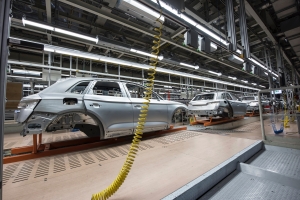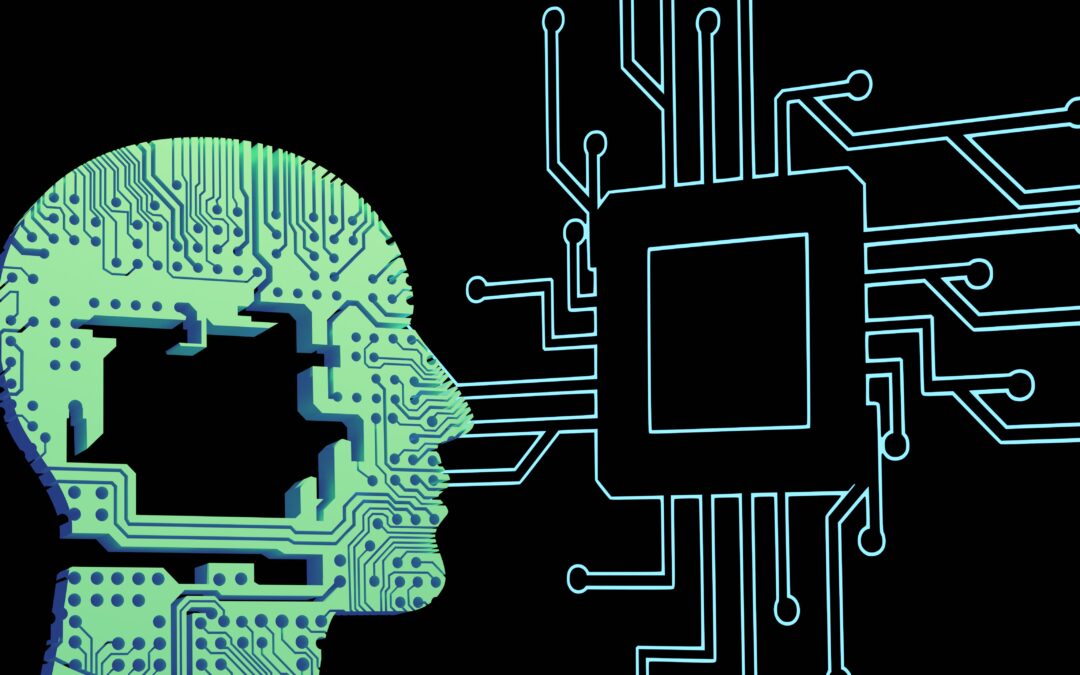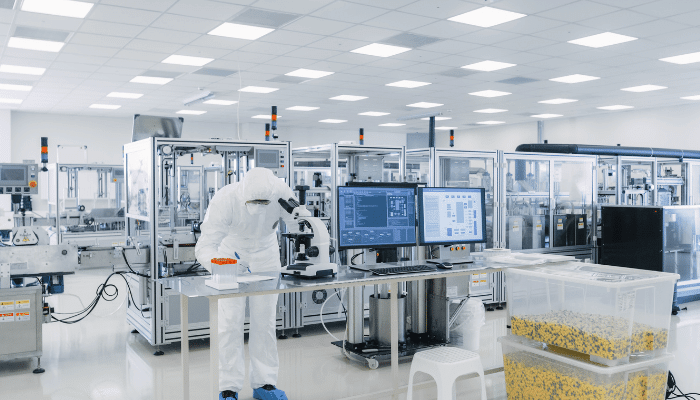Industry 4.0 is the fourth Industrial Revolution. Basically, we are taking everything from Industry 3.0, and optimizing it with modern, smart technology. Industry 3.0 allowed us to replace processes formerly done by humans, with machines and automation with some robots. This was a massive breakthrough, but today it is not as simple as just having the machine. Manufacturing products are becoming more expensive and competitive. Companies need to find new ways to compete and thrive. Industry 4.0 brings a whole new dynamic to the manufacturing industry. Having these nice, big machines that take the load off of humans in a much more efficient way is great. However, companies need to eliminate inefficiencies, increase production capacity and throughput, increase the flexibility of their production capacity, and in general do more with less. That is exactly where Industry 4.0 steps in.
How did we get to Industry 4.0?
Industry 1.0
I will briefly go over what has happened in the past, that has lead up to Industry 4.0. Of course, it all started in the first industrial revolution when industrial manufacturing was first starting up. This began in the 18th century through the use of steam power. This was the first time that engines were used to manufacture products. Before this, it was spinning wheels, and using muscle as the common manufacturing process. The use of steam engines massively expedited the whole process.
Industry 2.0
Then comes along the second industrial revolution. This took place in the 19th century and brought along the discovery of electricity. This also leads to the beginning of assembly-line production. Mass producing separate parts of a product on an assembly line was a huge change in the way everything was made. Quickly, it proved to be a much faster process, at a significantly lower cost.
Industry 3.0
The third industrial revolution was fairly recent, opposed to the first two revolutions that took place before any of us here today were even born yet. Industry 3.0 is almost like a slow beginning to the evolution of Industry 4.0. This was the introduction to mixing modern technology with manufacturing. Implementing robots, and partially automated systems to take the work off of humans. Manufacturers were starting to use the software, and computer programs to take control of parts of the process.
This is what begins to start Industry 4.0. Humans are continually having less responsibility within the actual manufacturing process. Machines are getting smarter to the point where humans are doing less hands-on work, and more monitoring.
Industry 4.0
The first three industrial revolutions all had to do with physical advancement. That is the major change with Industry 4.0, there really is not any specific new physical advancement that drives it. Industry 4.0 revolves around connecting the physical with the digital. There is a large emphasis on data collection and access to real-time data. It allows plant managers and business owners to better understand what is happening, and make adjustments based on data that was not available before. This gives you more control over machines. It lets you make a more efficient manufacturing process across the whole company. Not limited to just one machine, one plant floor. It creates a network of data across multiple plants, in multiple locations.
How does Industry 4.0 Affect Manufacturers?
Industry 4.0 brings higher levels of automation, and a lot more data to gather and analyze. Connecting all of these systems together is greatly beneficial. It gives the manufacturer a very accurate and detailed look into the plant floor to examine what is happening. This is important only if you are gathering the right data, analyzing it correctly, and making the proper adjustments to allow this data to really help you.
With machines being smarter and requiring less human interaction, what does this mean for the workforce? This might lead you to think that a lot of people might lose their job to a machine that does not need them anymore. The real answer is just the opposite. Although people do not need to be as involved in running the machine, people gathering and analyzing the data are needed more now than ever before. Machines can produce for the most part on their own. Industry 4.0 and IIoT systems (Industrial Internet of Things) can gather data telling you every little thing that is going on in the inside of your machine. People need to look at this data, and as they learn more about the machine, make the necessary adjustments to improve the efficiency of the plant.
How does Data make a Difference?
We have established that Industry 4.0 brings a digital aspect and detailed data to the manufacturing industry. What exactly does this mean for you? The goal of your business is to grow to increase profits, and generate more revenue. How does the implementation of Industry 4.0, and collection of data bring you more money at the end of the day?
There are endless ways to analyze data and find a way to make an improvement with that information. When you buy a machine, they will tell you that this machine can make x pieces in x amount of time. Usually, this number looks really great, how often does that really end up being the consistent production numbers of that machine? Never, because that is a perfect world scenario. There is never going to be a perfect situation, with no problems or setbacks. Also, a machine is never really running at 100% all the time.
How are you ever going to know, or be able to give a really accurate estimate to a customer when they say that they need x products in x amount of time? How consistent can that number be with no analytics to back it up? You need to gather data and become a data-driven company. An IIoT system will collect data on all of the machines, and you can use that data to calculate the OEE of a machine so that you know exactly how productive each piece of equipment is.
Now you will develop an understanding of how much product your machines are actually producing. First of all, now you have the substance to give customers accurate estimates that are backed by data. You can also use the data to improve your OEE now that you can see that information.
A typical OEE calculation for a manufacturer is around 30%. If one machine is supposed to be making 1000 pieces per hour, it is now only making 300. Let’s say that this machine is running for 8 hours per day. That machine should be making 8000 pieces, but it is only making 2400. Over the course of a month that is 112,000 pieces that were not produced. Of course, that number is in a perfect world, 100% OEE is next to impossible, but you can get very close to it, and a whole lot closer than 30%
After a company just sees the information showing them their OEE in these low numbers, within2-3 months that number jumps up to 80%+ a lot of the time. Just by being able to see the data, and start to understand what areas can be improved.
How can Industry 4.0 cut Downtime?
We covered how data can help make machines more efficient, but downtime is undoubtedly one of the biggest challenges to overcome. So how can data improve your downtime?
Again, the more data you can gather, the more you will understand about your machines. Learn about how they work instead of just observing from the outside.
As we gain this understanding of how the machines work we will learn tendencies, start to see patterns, and learn what is actually causing the machines to stop working. Now we know what is breaking, and how the machine got to that point. We can use this information to better schedule preventative maintenance. So now at this point, we know how, and why a machine is breaking, and also learn when to address these problems before they happen.
You will have the ability to predict the optimal time to schedule maintenance when your machine needs it. All of the data you need will be right in front of you to make that decision.
This will help with planned downtime because there will be no unnecessary and excessive maintenance. However, you will know exactly when your machine needs work. You will know what part needs work, and you will see the data that tells you how it got to that point. So not only will you have a quick solution to your initial problem, but you now have a record of what happened and you can use that to improve the process so that it doesn’t happen again. Eliminating issues one by one with contextualized data so that a problem is fixed, and you know why.
This also applies to changeover times. A lot of companies don’t realize how much of an improvement they could be making in this area. You might think you have a really efficient process, but once you see the actual results you will see what areas can be improved to have the most efficient plant floor possible.
Now Industry 4.0 technology will also reduce unplanned downtime. Since your planned downtime will now be more efficient and effective since you now have the data to fix the right parts, at the time they need it. Of course, the goal of preventative maintenance is so that machines run properly for as long as they can without breaking down.
Conclusion
The big concept within Industry 4.0 is ultimately mixing physical machines with digital technology, extracting the data from deeper within the operations, and using it to run the plant more efficiently…to get more out of what you have. Industry 3.0 produced a lot of these machines. Those machines have had data “trapped” inside them for many years, and that data has rarely been used. Industry 4.0 will allow a manufacturer to use them to their fullest capacity by using the data to use them more efficiently and effectively. It is becoming absolutely essential to be a data-driven company.
To be competitive in the next five years, transitioning into an Industry 4.0 infrastructure will be more important than ever for any sized manufacturing business. As technology advances it is becoming more affordable than ever. This means it is available to more people, but also means more of your competitors will be moving in this direction.
At Ectobox we are experts in the industry and would be more than happy to assist you in finding the right IIoT solution that fits your specialized needs. Contact us here to get in touch, we would love to answer any questions you have.


 Industry 3.0
Industry 3.0




